Mao's Last Dancer Blu-ray Movie
HomeMao's Last Dancer Blu-ray Movie 
20th Century Fox | 2009 | 118 min | Rated PG | Jul 26, 2011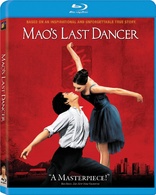
Movie rating
7.3 | / 10 |
Blu-ray rating
| Users | 0.0 | |
| Reviewer | 4.0 | |
| Overall | 4.0 |
Overview
Mao's Last Dancer (2009)
A drama based on the autobiography by Li Cunxin. At the age of 11, Li was plucked from a poor Chinese village by Madame Mao's cultural delegates and taken to Beijing to study ballet...
Starring: Chi Cao, Bruce Greenwood, Kyle MacLachlan, Joan Chen, Amanda SchullDirector: Bruce Beresford
| Drama | Uncertain |
| Romance | Uncertain |
| Music | Uncertain |
| Biography | Uncertain |
Specifications
Video
Video codec: MPEG-4 AVC
Video resolution: 1080p
Aspect ratio: 1.85:1
Original aspect ratio: 1.85:1
Audio
English: DTS-HD Master Audio 5.1
Subtitles
English SDH, Spanish
Discs
25GB Blu-ray Disc
Single disc (1 BD)
Playback
Region A (C untested)
Review
Rating summary
| Movie | 4.0 | |
| Video | 4.5 | |
| Audio | 4.0 | |
| Extras | 1.0 | |
| Overall | 4.0 |
Mao's Last Dancer Blu-ray Movie Review
The other recent film about ballet.
Reviewed by Casey Broadwater June 7, 2011Black Swan brought ballet back to the big screen last year in a big way, but it wasn’t the only recent film to explore the behind-the-scenes drama of a troubled artiste-in-tights. Mao’s Last Dancer—a 2009 Australian production by Driving Miss Daisy director Bruce Beresford —might be thought of as the anti-Black Swan; where the latter is a dark, psychosexual fugue that ends in a kind of artistic self-immolation, the former is a feel-good true story that celebrates the triumph of expression over oppression. It seems appropriate, somehow, that these two films would balance one another out like this, and anyone who hasn’t seen either of them yet could do much worse than to watch them both back to back as a double feature. For Beresford, whose last film was 2006’s straight-to-video flop The Contract, Mao’s Last Dancer is something of a return to form, and although it occasionally overindulges its own sentimentality—as feel-good films are wont to do—the story is uplifting and likeable. If the film’s propensity to jerk tears comes across as slightly forced, the dance sequences exude authenticity, which should at least leave ballet fans nodding in approval.
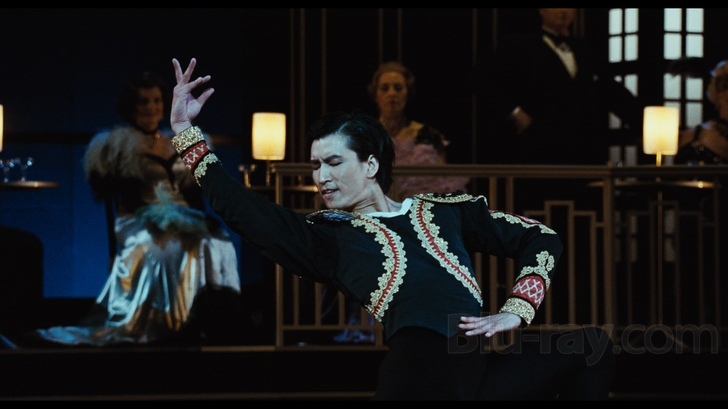
The film is based on the autobiography of Li Cunxin, a dancer and Chinese expatriate who was the center of a minor international incident in 1981 when he was held captive by the Chinese consulate in Houston after it was discovered that he no longer wanted to dutifully return to his communist homeland. We meet Li—played in adulthood by real-life dancer Chi Cao—as he arrives in Texas, immediately overwhelmed with culture shock. As he steps into the airport concourse, his exchange program host, Houston Ballet director Ben Stevenson (Bruce Greenwood), gives him a warm hug, a symbol of affection Li clearly isn’t used to and didn’t expect. Neither did he anticipate America’s opulence—shopping malls and skyscrapers, extravagantly stocked candy stores and ATMs that spit out cash—or the degree of freedom its citizens have when it comes to political dissent. When Li is out at a nightclub, he tries to shush one of his newfound American friends—a burly cowboy—when the guy expresses how much he dislikes President Reagan. For Li, who wears a Chairman Mao pin on his lapel, this forthrightness is unthinkable. We understand why when the film flashes back to Li’s past—as it does several times—to show the course of events that lead him to America. Born to a poor family of seven in the rural Shadong province, Li is plucked from obscurity by party officials as an eleven-year-old and chosen to attend Madame Mao’s Beijing Dance Academy. Here, the students are schooled in an athletic, distinctly Chinese form of ballet that’s essentially a vehicle for revolutionary propaganda. They’re also taught that the capitalist West is an “unimaginably awful” place.
Of course, Li discovers that it’s not half bad in the good old U.S. of A. Thanks to mildly relaxed international relations following Mao’s death, Li is sent to the U.S. to study with Stevenson, and he quickly finds personal freedom to his liking. (Imagine that.) Early on, he’s warned by Consul Zhang (Ferdinand Hoang), “Trust no one, especially women. They will lead you astray,” but Li falls quickly for the first blond beauty he sets his eyes on, Liz (Amanda Schull), a wannabe dancer who just doesn’t have the skills to make it into Stevenson’s company. Out from under the gaze and influence of “The Party,” Li lives it up in Houston—American cloths, American girlfriend, all-around American lifestyle—and when he gets a taste of stardom filling in for the injured lead in a production of Don Quixote, he decides he doesn’t want to go back to being just another state-sponsored dancer in China. With some help from immigration attorney Charles Foster (Kyle Maclachlan), Li weighs his options and chooses to defect, going so far as to rush into a marriage with his newfound sweetheart in order to give his decision legal legitimacy. This all leads to a showdown of sorts at the consulate, but the story doesn’t end there. Choosing to stay in the U.S. has its consequences for Li, who has to contend with a jealous wife, frequent nightmares, and the fact that, in pursuing his art and freedom, he may have forfeited the possibility of ever seeing his family again.
In some ways, Mao’s Last Dancer oversimplifies the Communist East vs. Capitalist West dichotomy, presenting America as a glittering wonderland of infinite possibility and China as an unequivocally terrible authoritarian hellhole. There’s a lot of truth at the heart of this depiction, sure—living under the omniscient watch of Mao’s regime certainly was no picnic—but Beresford and screenwriter Jan Sardi (Shine) take it to extremes, contrasting America’s splendor and China’s gloomy oppressiveness a bit too obviously. Still, this is mostly forgivable given how subjective the movie is intended to be. This is Li’s story, and I’m sure we’d all agree there are aspects of our own lives that we tend to place into black and white categories. The film’s innate sentimentality and penchant for melodrama might be defended in the same way. There are some semi- manipulative scenes that seem precision engineered to turn on waterworks in the audience, but you have to give Beresford this: he does it well, beautifully even. There are two deeply cathartic moments in the film, so you might want to have a hankie on hand to dab your eyes.
Ballet fans will be glad to hear that the dancing in the film is top-notch; unlike Black Swan, the principle actors here are all real dancers. This means Beresford doesn’t haven’t to stylize the dance sequences or film everyone from the waist up. For the most part, he sets his camera back, giving us a wide-angle view so we can take in every leap and pirouette. Chi Cao, a member of the Royal Birmingham Ballet, is wonderful as Li; not only is he a tremendous dancer—it sometimes looks like gravity has no effect on him—but he’s also likeable as an actor, playing this wide-eyed role with appreciated restraint. (Coincidentally, Cao’s parents were actually two of Li’s teachers at the Beijing Dance Academy.) The supporting cast is just as good. Kyle Maclachlan puts on a convincing Texan drawl, and his former Twin Peaks co-star Joan Chen is perfect as Li’s loving mother. The best turn, however, comes from Bruce Greenwood as the arch ballet director, an impresario who may not be as controlling as Mao, but still comes off as something of a dictator.
Mao's Last Dancer Blu-ray Movie, Video Quality 
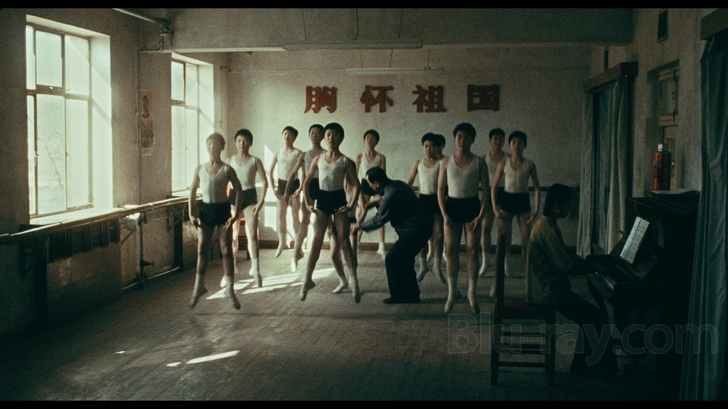
You'll notice two distinct visual styles in Mao's Last Dancer, and if you watch the behind-the-scenes featurette included on the disc, the film's cinematographer, Peter James, explains his rationale for both. To give an older look for the scenes set in Maoist China, James effectively reduced the frame size of his 35mm film stock by half—creating an image that's intentionally softer and grainier—and used selective color toning to give the picture a rugged, gloomy cast. When the film shifts to Houston, he reopens the frame to its full size for a more conventional, glossy, naturally colored look. Both styles are represented well by the Blu-ray's 1080p/AVC-encoded transfer, which looks wonderful. The print is in perfect shape, grain is rich and untouched by DNR, and there are no traces of edge enhancement or any other kinds of unnecessary boosting. The degree of clarity in the picture, I imagine, is exactly as intended. Scenes shot and set in China are noticeably softer—thanks mostly to the chunkier grain structure—while the Texas scenes show off lots of fine, high definition detail, especially in facial and clothing textures. Color is also strong throughout, with a foundation of deep blacks and tight contrast. Finally, there are no digital anomalies or compression-related problems to report.
Mao's Last Dancer Blu-ray Movie, Audio Quality 
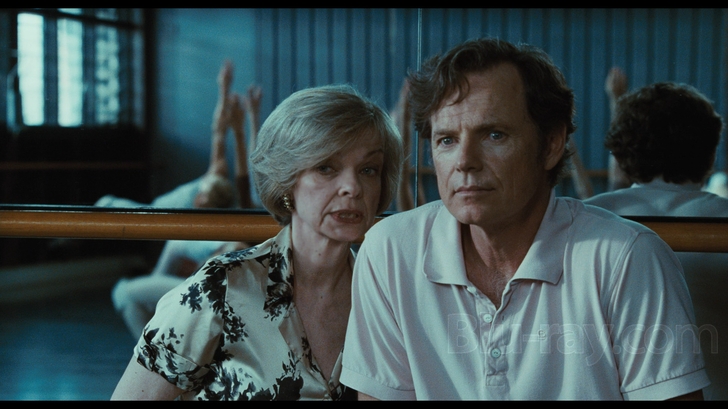
Mao's Last Dancer features a DTS-HD Master Audio 5.1 surround track that's grounded and dynamically expressive. The key element to this track is the music, from Christopher Gordon's evocative score—which melds Western orchestration with Chinese violin and other specifically Eastern sounds—to the varied use of classical ballet music, like sections from Stravinski's Rite of Spring, a ballet that caused a literal riot when it first debuted. (And let's not forget the clichéd, post-implied-sex-scene usage of Rick James' "Superfreak.") All of the music sounds fantastic—rich and clear throughout the range—and it's frequently spread out between all 5.1 channels, filling the soundspace powerfully. In most other respects, this is a quiet, dialogue-driven track, and voices are always clean and intelligible, with no muffling or crackles. The rear speakers do also host hushed ambience on occasion, but nothing that stands out. And perhaps this is a good thing. Optional English SDH and Spanish subtitles are provided, and automatic subtitles kick in for the sections of the film in Mandarin.
Mao's Last Dancer Blu-ray Movie, Special Features and Extras 
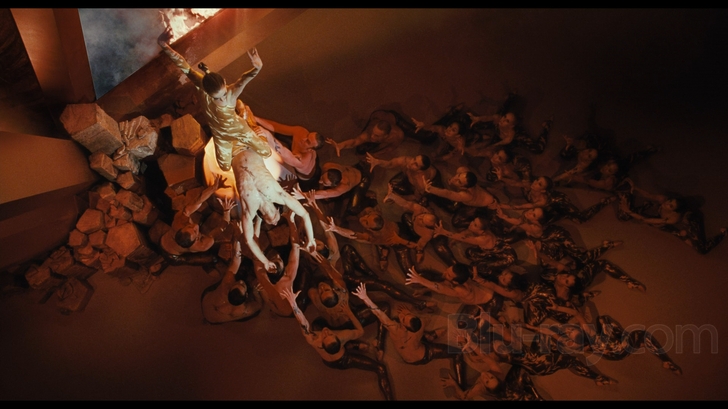
While the film's Canadian release also included several deleted scenes, a stills gallery, and a trailer, the only supplement included on this U.S. disc is The Making of Mao's Last Dancer (SD, 19:21). Thankfully, it's well worth watching, with generous behind-the-scenes footage and interviews with all the key players.
Mao's Last Dancer Blu-ray Movie, Overall Score and Recommendation 
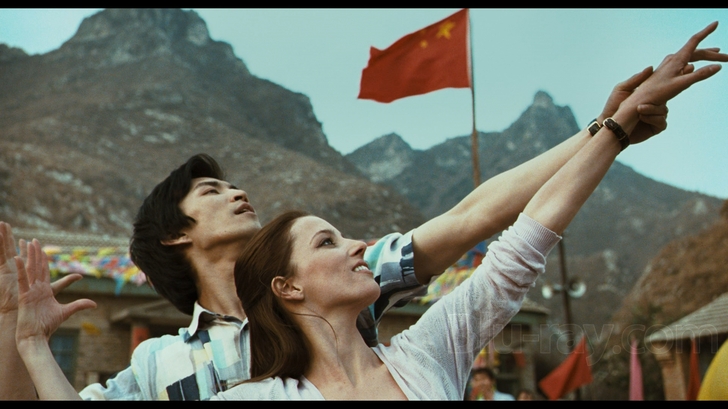
The "inspirational true story" genre is often overrun with gratuitous schmaltz, but Mao's Last Dancer knows how to use its sentiment well, and I'll even admit to getting a bit bleary eyed during two of the final scenes. (Even if the triumphant freeze-frame ending is a total visual cliché.) Ballet followers will appreciate the film's use of real dancers, but this is by no means a movie strictly for dance fans—Li Cunxin's story has powerful universal relevance. The Blu-ray disc from Fox looks and sounds wonderful, and do note that this release is a Target exclusive until July 26th, when it hits Amazon and other retailers. Recommended!
Similar titles
Similar titles you might also like

Young Man with a Horn
Young Man of Music / Warner Archive Collection
1950

Antwone Fisher
2002

Frida
2002

Crazy Heart
2009

Walk the Line
2005

A Star Is Born
2018

Hemingway & Gellhorn
2012

Freeheld
2015

Cabaret
Reissue
1972

The Rose
1979

Diana
2013

The Eddy Duchin Story
Limited Edition to 3000 - SOLD OUT
1956

Once
2007

Saturday Night Fever 4K
+ Director's Cut on Blu-ray | 45 Year Anniversary
1977

The Loves of Carmen
1948

Valley of the Dolls
1967

Funny Girl 4K
1968

A Matador's Mistress
Manolete
2008

Désirée
Limited Edition to 3000 - SOLD OUT
1954

The Red Shoes 4K
1948